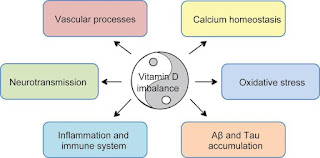Vitamin D and hypertension
Vitamin D, a fat-soluble prohormone, has wide-ranging roles in the regulation of many physiological processes through their interactions with the vitamin D receptors (VDR). It plays a major role in bones and calcium metabolism. Vitamin D deficiency is not uncommon and it has been associated with many health-related issues, including skeletal and non-skeletal complications. The association of low vitamin D and cardiovascular diseases and risk factors has been explored in both animal and human studies. However, studies and trials on the effect of vitamin D supplementation on cardiovascular risk factors and hypertension are conflicting with inconsistent results. Therefore, large, well-powered randomized controlled trials are warranted. If successful, supplementation with easy and low-cost vitamin D can impact our health positively. Here, we summarized the evidence for the association of vitamin D, cardiovascular diseases and risk factors, including coronary artery diseases, stroke, and hypertension, and mortality, with special consideration to resistant hypertension.
There is accumulating evidence for the association between vitamin D and blood pressure. An earlier analysis of NHANES III 1988–1994 of 12,644 participants aged > 20 years showed an inverse association between vitamin D level and blood pressure. Similar results were obtained from analysis of NHANES 2003–2006 of 7228 participants, the Insulin Resistance Atherosclerosis Family Study (IReSFS) , and the Kaiser Permanente Southern California health plan.
Forman and colleagues have also demonstrated an inverse association between vitamin D and risk of incident hypertension from two prospective cohort studies including 613 (followed for 4–8 years) and 38,388 (followed for 16–18 years) men from the Health Professionals’ Follow-Up Study and 1198 (followed for 4–8 years) and 77,531 (followed for 16–18 years) women from the Nurses’ Health Study. Their results, combining men and women with measured 25(OH)D levels, showed a pooled relative risk of 3.18 (95% confidence interval [CI]
Worldwide studies have also demonstrated such an association. In a cross-sectional study of 833 Caucasian males in Uppsala (central Sweden), a threefold higher prevalence of confirmed hypertension was found in participants with 25(OH)D levels < 37.5 nmol/ L. Additionally, a cross-sectional analysis of 1460 participants in Shanghai showed a high prevalence of vitamin D deficiency (55.8%) in middle-aged and elderly Chinese men . In adolescents (aged 13–15), a study of 1441 Peruvians showed an inverse association between vitamin D deficiency and blood pressure, which may predispose risk of HTN later in adulthood.



Comments
Post a Comment